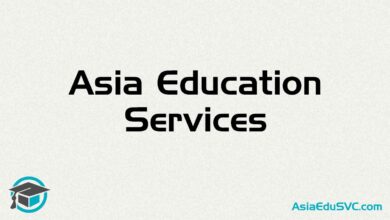
**Discovering the Ideal Yoga and Meditation Approaches to Enhance Your Inner Exploration**
Your engagement with yoga or meditation is a highly individual and transformative experience that necessitates careful consideration of the right instructors, techniques, and resources to aid your development. While it’s common to view yoga and meditation as uniform practices, the truth is that our connection to these methods is deeply influenced by our personal objectives, learning preferences, and life situations. By delving into what truly resonates with us, we can elevate our practice and cultivate meaningful, enduring transformations in our lives.
In this piece, we will examine how identifying the appropriate instructors, customizing your methods, and honoring your inclinations can enrich your yoga or meditation experience.
—
### **Identifying Your Objectives: The Basis of Transformation**
The initial step in enhancing your yoga or meditation practice is clarifying your “why.” What compels you to unroll your yoga mat, engage in stillness, or participate in guided meditations? Is it to alleviate stress and anxiety, recover from previous traumas, enhance your physical well-being, or seek clarity amidst chaos?
Every instructor and practice carries distinct goals and intentions, making it crucial to find alignment between your desires and their teachings. For example, if your aim is to manage anxiety or depression, teachers who incorporate mindfulness, trauma-responsive practices, or emotional healing strategies may resonate with you on a deeper level. Conversely, if your concentration is on physical health or broadening spiritual understanding, a vigorous yoga session focusing on strength or a meditative practice grounded in self-awareness might be more fitting.
Your individual needs serve as the guiding compass for your practice. By intentionally choosing the type of yoga or meditation instructor or application you engage with, you will naturally resonate with practices that feel fulfilling, supportive, and transformative.
—
### **Recognize Your Learning Style**
Just as our educational experiences vary, with some learning through visual means and others through auditory stimuli, our preferences in yoga and meditation often reflect our learning styles. Some individuals excel by observing a teacher’s posture in yoga classes, while others favor verbal guidance over visual examples.
In a similar vein, meditation practices that incorporate sound—such as Tibetan singing bowls, gongs, or nature-inspired soundscapes—can assist auditory learners in achieving deep relaxation and focus. If you are a visual learner, guided visualizations or watching a teacher’s movements during poses can help you stay present.
The essential factor is to observe what captivates you and fosters a sense of flow in your practice. Trying out various styles—be it restorative yoga, Kundalini, mindfulness meditation, or transcendental meditation—can enhance your connection and align your practice more closely with your authentic self.
—
### **The Influence of Preferences: Accept Yourself and Celebrate What You Enjoy**
A significant and empowering change you can make in your practice is granting yourself the freedom to have preferences. Yoga and meditation represent sacred spaces where it is acceptable to honor your desires rather than dismiss them.
Do you feel comforted by a particular teacher’s voice, or do you prefer a tranquil studio atmosphere over practicing at home? Do you relate more to slower, more intentional practices instead of high-energy flows? Your preferences, regardless of how minor or absurd they may seem, are crucial in maintaining your engagement, enthusiasm, and alignment with your objectives.
As life’s demands often require compromise and flexibility, your yoga or meditation practice can become your sanctuary where you unapologetically select what resonates best with you. This may involve something as straightforward as choosing a meditation app with a user-friendly design and meaningful material or prioritizing a class instructed by a teacher whose philosophy resonates with your soul.
—
### **Commencing from Where You Are**
Every path of personal development, healing, or spiritual quest starts with meeting yourself precisely where you are. This idea is particularly relevant to affirmations, which many meditation advocates promote, yet these may not connect with everyone.
For those facing deeply ingrained struggles such as low self-esteem or unresolved trauma, standard affirmations like “I am enough” or “I am worthy” can seem disingenuous or even unsettling. Studies, including *”Positive Self-Statements: Power for Some, Peril for Others,”* indicate that overly optimistic affirmations might backfire for individuals already feeling down. In such scenarios, affirmations must be adapted to seem pertinent and safe, reflecting achievements you are ready to acknowledge.
For example, the affirmation, “I am safe. I have a home. I have financial stability,” can hold profound significance for someone recovering from financial uncertainties or unsafe living situations. It requires time, experimentation, and self-kindness to uncover statements or messages that genuinely resonate with your thoughts and feelings.
—
### **The Importance of Instructors: Locating Your Mentors**
As every practitioner brings distinct experiences to their practice, each instructor contributes their unique intentions, philosophies, and methods.